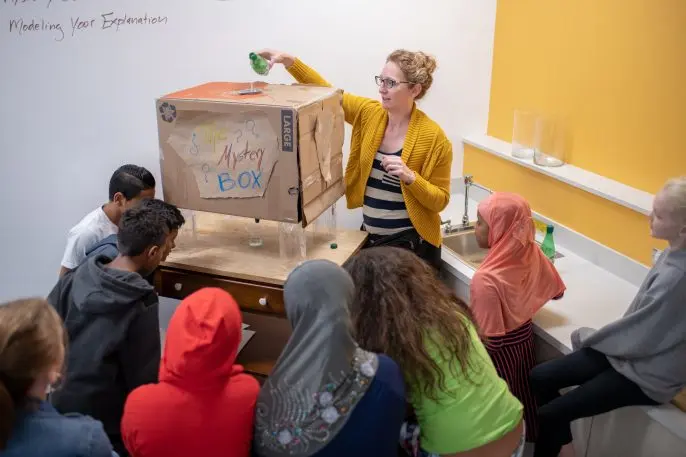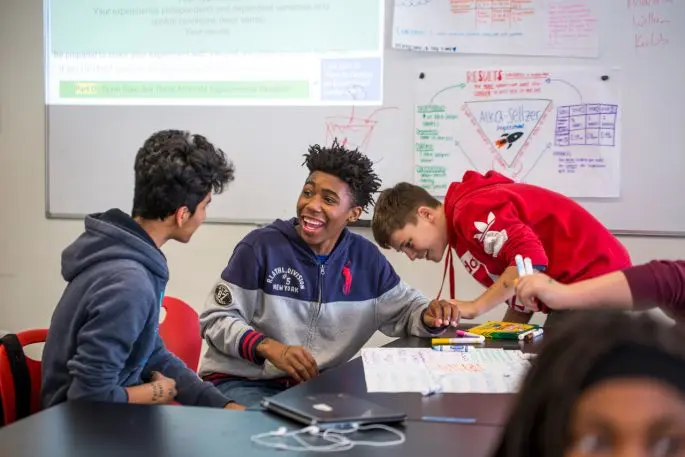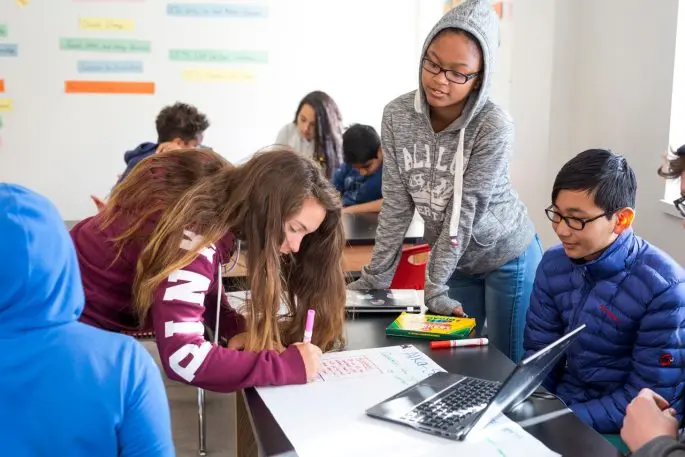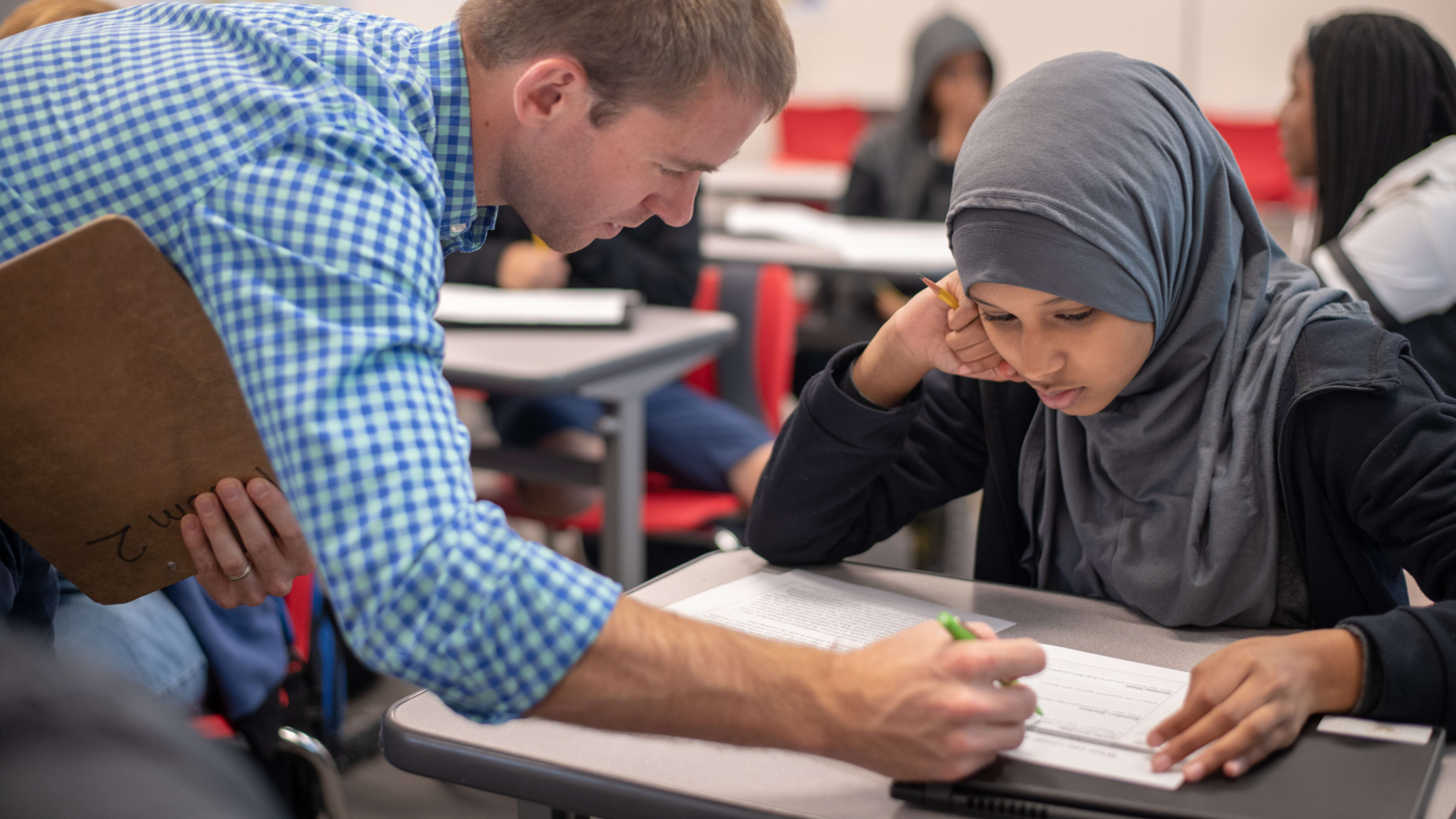Earlier this month, nearly 100 students from Brooklyn’s Secondary School for Journalism walked out of school to protest the use of Summit Learning, a personalized education system backed by Facebook CEO Mark Zuckerberg’s philanthropic organization.
The students complained that the program, designed in part to deliver individualized lessons to students at their own pace, kept them busy at computers rather than working with teachers and classmates. It also failed to prepare them for standardized tests and violated their privacy by collecting data on their grades, disciplinary records, and demographics, they said.
“Unlike the claims made in your promotional materials, we students find that we are learning very little to nothing,” wrote two of the walkout’s student leaders in a letter to Zuckerberg that was published by the Washington Post. “It’s severely damaged our education, and that’s why we walked out in protest.”
New York City’s Department of Education didn’t immediately respond to an inquiry from Fast Company.
The Summit Learning system evolved from Summit Public Schools, a network of 11 charter schools in California and Washington state. It’s supported by philanthropic organizations, and the biggest source of funding is the Chan Zuckerberg Initiative, founded by Zuckerberg and his wife, the pediatrician Priscilla Chan. About 380 schools across the country now use the system, up from just 19 in 2015, say Summit officials, who insist that the program is about more than digital busywork. Students in Summit programs should have weekly ten-to-fifteen-minute meetings with an assigned mentor, and should “spend the majority of their time learning through projects,” says Catherine Madden, Summit’s senior director of communications.
When students are doing individualized computer work, which could involve watching videos, taking quizzes, or reading online material, teachers should still be actively traveling through the classroom and perhaps helping students with their work individually or in small groups, she says.
‘You’ll see the teacher going around the class and structuring it in a really dynamic way,” Madden says.

There’s very little info on how personalized ed helps students
Summit Learning is part of a wider push to deliver more personalized educations to individual students, rather than rely on a one-size-fits-all approach where every student watches the same lectures, reads the same passages, and completes the same homework assignments on the same schedule. That idea isn’t entirely new: Teachers and school systems have always tried to offer supplementary material to advanced students and extra help to those falling behind. But computers have made it more practical for teachers to track pupil performance in detail and provide interactive lessons to a class while they work with individuals and small groups, writes John F. Pane, a senior scientist at the RAND Corporation, in a report on personalized learning released last month.
“I think that people do see that there’s an opportunity involved in trying to create more personalized learning experiences for students,” he says. “They’re starting to think, what kind of leverage can we get by employing technology.”
Since such programs are still relatively new, there’s still a dearth of information about exactly which programs and what techniques help students perform better, he says.
“I think the field is in a very exploratory stage right now where people are trying different things even within a school,” Pane says.
Summit, for its part, says that its program is built on sound educational science and points to individual reports from schools of increased student performance and enthusiasm. In a draft op-ed shared with Fast Company, Pasadena (Texas) Independent School District executive director for innovation and development Melissa McCalla writes that seventh graders in the district’s Summit program scored 14 percentage points higher on a state reading test than peers who weren’t in the program.
“These improvements are important, but beyond the statistics, students, educators, and parents tell us how they have experienced firsthand the power of personalized learning,” she writes. “Students are more excited than ever to come to school and learn.”

In addition to curricular materials and an online learning platform, developed in part by engineers from Facebook and the Chan Zuckerberg Initiative, Summit provides participating schools with teacher training and mentoring to help them implement the program. All of that is free of charge to local districts, with funding coming from the Chan Zuckerberg Initiative and Summit’s other financial backers. It’s easy to see how that could be valuable to administrators at cash-strapped schools, in an era when many districts struggle to keep up with the costs of textbooks, staff, and technology, with some forced to place students into larger classes or even cut school to just four days per week.
“In a way, they’re reacting to a real problem, which is that in many schools class sizes really are too large and it’s very difficult for teachers to cope,” says Leonie Haimson, co-chair of the Parent Coalition for Student Privacy and a vocal critic of Summit.
“There’s a mismatch there”
Summit and the Chan Zuckerberg Initiative have suggested there were problems with the program’s implementation in the Brooklyn school. “There’s a mismatch there, and we need to figure out how to close that gap,” Summit founder and CEO Diane Tavenner told Fast Company on Saturday after a meeting with student leaders and their families. New York City’s school system announced the school would stop using Summit in the 11th and 12th grades, where Tavenner says it was being deployed without her organization’s knowledge by teachers untrained in its use.
But Haimson says she’s heard similar complaints from schools elsewhere in the country.
“I’ve had parents reach out to me from now 15 states across the company who are absolutely distraught that their kids are using the program,” she says. “This includes many students who have always enjoyed school and always done well at school.”

“If you walk into a classroom where you see students spending all day on their laptops, they’re not doing Summit Learning correctly,” she says.
“We do not sell student data.”
Students and parents also express fears that Summit, with its ties to Zuckerberg amid Facebook’s data handling controversies, is gathering too much information about students, Haimson says. Summit’s privacy policy says it may receive information about student demographics, suspension and expulsion records, extracurricular activities, college acceptance and employment, “mentor observations” and whether students are in subgroups like students with disabilities or English learners.
“We know that they are grabbing a huge amount of personal student data including everything from disabilities to detailed disciplinary records,” says Haimson.
Summit says that it doesn’t give Facebook employees access to its platform and only gathers much of that data to help schools track student progress, protecting the data with “physical, technical, and administrative safeguards” to prevent unauthorized access.
“I want to make clear to you that we are in no way misusing student data,” Madden says. “We do not sell student data.”
Still, in a country with a strong tradition of locally run public schools, many students and parents remain suspicious of a program with ties to a controversial Silicon Valley billionaire. In some cases, parents have also complained of perceived liberal bias in the curriculum, although Summit officials emphasize that schools are free to customize the program and curricular material to their own needs.
“We encourage schools to make sure that they vet them in advance, to make sure that they feel like they are suitable for their own communities,” Madden says.
While she says Summit encourages schools to “work closely with their families” to implement the program and make sure the public is educated about it, parents and teachers alike have sometimes complained about a lack of information or room for public discussion before Summit programs are put in place.
“What a lot of the public doesn’t get is that the decision making for teachers to use different types of technology in their room has been taken for them,” says Marla Kilfoyle, a teacher and activist who served for a time as executive director of the Badass Teachers Association. “They’re never brought to the table. They’re never asked. These things are never piloted.”
In Cheshire, Connecticut, the school district ended participation in Summit just a few months into last school year after public complaints, with some parents essentially seeing the program as an unnecessary experiment with their children as subjects. Lori Braun, a parent of a then-seventh grader, says she supported the program and thought it helped her daughter learn material at her own pace.
“She could learn more than the teacher was able to teach because maybe other students weren’t as far ahead,” she says.
But, Braun says, there was never a robust public discussion of the program before it was pulled. Ironically, the program may have been partly done in by the viral spread of critical comments on Zuckerberg’s more famous project.
“I think a lot of the negativity was through social media,” she says.
Recognize your brand’s excellence by applying to this year’s Brands That Matter Awards before the early-rate deadline, May 3.
